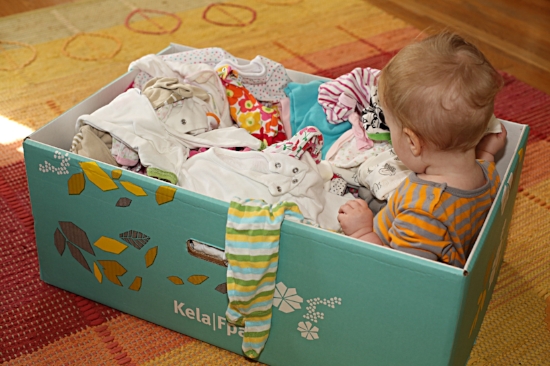I’m fascinated by Finland - a country I’ve yet to visit but that's high on my list. The Finns strike me as sophisticated people - they’re pioneers in gender equality, hold an annual ‘National Literature Week’ in Helsinki and take silence and saunas (two things I'm extremely fond of) extremely seriously! But what’s always impressed me most about them is an idea they instigated back in 1937 which, today, is catching on all across the world...
What, might you ask, is it? Why the 'Kela' Baby Box.
Photo: Embassy of Finland
Now before I go any further, here's a disclaimer - I’m not a mother. I’ve never had to shop for cribs or bassinets. I’ve never had to leave a hospital clutching a tiny newborn, wondering how on earth I’m going to survive in the coming months. And I've never had to have long, exhausting discussions with other parents about colic, sleeping arrangements and infant mortality rates. But whilst I've no first-hand experience in the baby business, I still can't but help love the idea that Finland’s ‘Baby Box’ represents: a commitment to giving every baby, whatever its socio-economic background, a warm and safe welcome into the world.
A little history. Almost 75 years ago, Finland was a relatively poor country and infant mortality rates were high. In an attempt to change this, the government began giving out boxes to pregnant women, filled with essentials.for the first year of life. Called 'the Maternity Grant' these included (amongst many things) babysuits, bathing products, nappies (diapers) bedding and a tiny mattress. This mattress, when placed at the bottom of the cardboard box, was quickly transformed into a simple and portable sleeping place for the baby. And for poor families, who didn't necessarily have a clean, safe place for an infant to sleep, these goods and the 'makeshift bed' were a godsend.
Photo" Finnish Labour Museum
Initially, the box was distributed to women on low incomes but in 1949 the law was changed and this ‘gift’ from the government was offered universally. It could (and can) be claimed on one small condition - that the woman attend a prenatal check before the end of her fourth month of pregnancy. Surprise surprise, this small condition had the desired effect - women began registering with the country’s health service, and seeking regular check-ups. As a result, mortality rates began falling dramatically and today they are some of the lowest in the world (indeed, half of those in the USA).
The box, of course, is ever-changing in its contents, in an attempt to keep up with current trends. Colours (always gender neutral) and nappies (no longer disposable) come and go with the times. Moreover, if a woman prefers a cash grant she can take it in the lieu of the box although most prefer the box (either because they like the tradition or because its contents are of higher value than the money itself) Here are a few of the fantastic items it currently contains:
4 pairs of leggings and 10 bodysuits
snowsuit, hat, insulated mittens and booties
knitted hat/snow suit/balaclava/socks and insulated mittens
mattress, mattress cover, sheet, blanket and sleeping bag
hooded bath towel, nail scissors, hairbrush, toothbrush and bath thermometer
cloth nappy sets and muslin wraps
baby toy and a picture book
condoms (how wise!)
Photo; Courtesy of Embassy of Finland
At present, the box is worth 140 euros but there's big discussion about adding another 30 euros of items to it. The important thing, it is agreed, is that the items are durable and of good quality and that giving out the box encourages women to sign up with the health service. As Annika Saarikko, Minister for Family Affairs and Social Services has commented, the Maternity Grant is a sign of society that cares for its members. The Kela Box also loaded with cultural significance - mothers talk to their daughters about it and, when out and about, new parents often comment on other babies dressed in the same garments, instilling a rather nice community spirit I imagine.
Illustration: Riikka Kurki
But apart from being a 'rite of passage' for the expectant mother (uniting women down the generations) the box is, essentially, a great social leveller because, for some, its essential contents might well be unaffordable otherwise. The box, for me, represents social justice in action. Furthermore, in this over-commercialised age in which we live, where there's endless pressure to shop,
I can only imagine what a relief it must be not to have to compare prices then trudge around stores, in your third trimester. Instead, Finnish women can simply pick up the box from their local post office and know they have nothing more to do before the birth. And then, when their babies are finally old enough to sleep in a 'grown up' bed, there's nothing to throw away. save for a cardboard box (which can even be recycled).
Those Finns....they think of everything!
For more detailed info, take a look at this presentation by a Finnish government Ambassador..



